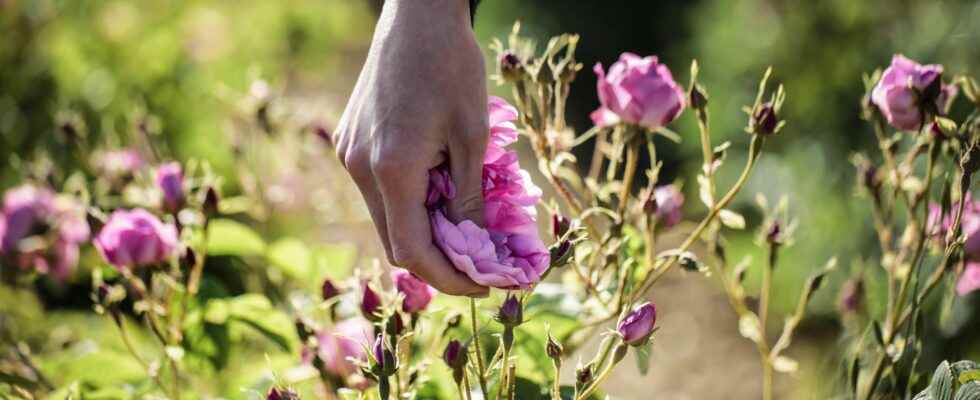Plant, flower, bark… Behind each perfume are hidden essential ingredients often harvested in the most remote regions of the world. In fact, sensitive to supply disruptions, perfume houses tremble with each crisis. Latest shortage to date: alcohol, the main ingredient made from cereals and beets. Collateral effect of the war in Ukraine. A crisis that is reminiscent of the “patchouligate” of 2008. At the time, farmers in Indonesia, the cradle of the world production of patchouli, abandoned its cultivation, for lack of sufficient income. The essential oil is running out. Prices are soaring. But without this essence, there is no Coco Mademoiselle by Chanel, or Angel by Mugler, or Miss Dior Chérie.
Since then, the big houses have undergone profound changes. “We had to think about perpetuating our sources of raw materials,” recalls Guillaume Frémondière, head of characterization and development of genetic resources at the Interprofessional Technical Institute for Perfume, Medicinal, Aromatic and Industrial Plants.
“An ever more responsible sourcing”
In the fields of vanilla in Madagascar, on the hills of vetiver in Haiti, in the heart of the rows of lavender in the Alps, the teams of sourcers then meet each farmer and establish a partnership with him. Thus Clarins, for whom the motto “increasingly responsible sourcing” allows no exception: the group develops lasting cooperation with its producers, going so far as to provide economic support to their villages (construction of schools, wells, awareness of medicinal plants …).
For its part, Chanel focuses its collaborations on a CSR pact in Costa Rica, Madagascar and the Landes in particular, while International Flavors and Fragrances (IFF) has established a virtuous sector in order to preserve its emblematic references. Her name ? Fair for Life. “It’s the only way to ensure a sustainable supply,” explains Judith Gross, vice-president of communications for the Perfume division of the American company based in Grasse. The company concludes ten-year contracts with farmers, all labeled by Ecocert.
In the field of Sébastien, on the heights of Grasse, every day sees its ballet of specialized engineers. Alongside the farmer’s rows of Rosa centifolia, pelargoniums and irises grow under the watchful gaze of scientists; the giants of perfumery do not hesitate, either, to invest massively in R & D. Genetic analyzes to select the best varieties of plants, agronomic parameters, resistance to diseases, management of the environment, preservation of fauna … everything is studied! Upcycling. IFF researchers have thus discovered that the leaves and rhizomes of turmeric, hitherto considered as waste, yield an exceptional essential oil. Or how to create a virtuous sector.
The fine flower of producers in the Pays de Grasse
Chanel, Dior, Lancôme, Louis Vuitton… Several luxury houses have recently acquired land in the Grasse region, where perfume flowers are grown from generation to generation, from mimosa to iris and jasmine or rose. While offering a strong foothold in France, they thus secure their supply of rare flowers from organic crops, which go into the composition of their most exclusive juices. Not to mention that a sublime estate in the Provençal nature is a nice story to tell consumers… But these initiatives have also contributed to reviving a sector that has run out of steam, alongside local players and processors of materials. raw. While there were only two of them, on borrowed time in 2005, today there are around thirty producers united within the association Les Fleurs d’exception du pays de Grasse to weigh up, help each other and highlight all the know-how related to perfume. They are now listed as intangible cultural heritage by Unesco.
